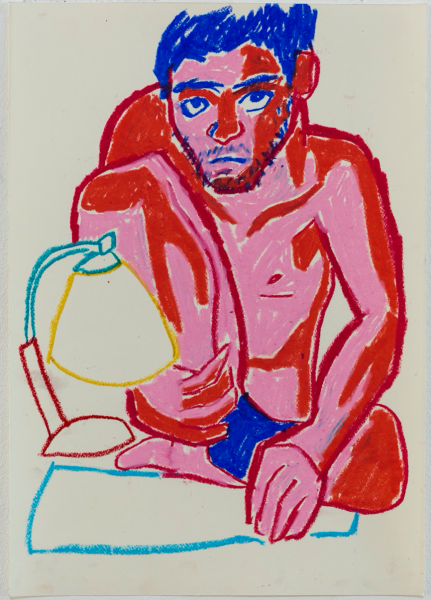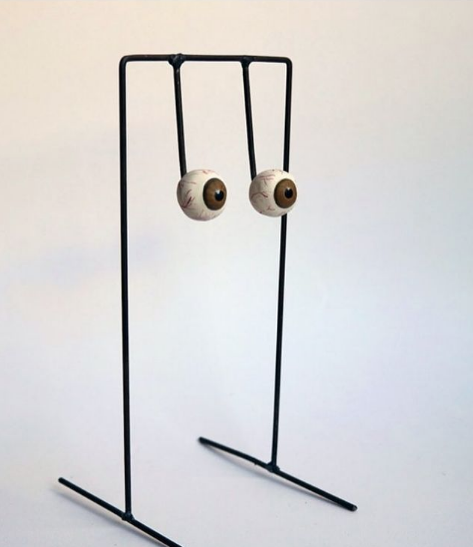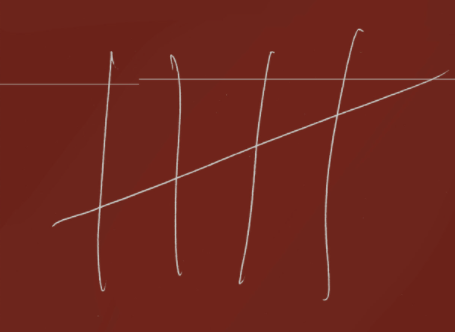GREECE IN USA launches its program with the group exhibition “The Right to Silence?” that the non-profit platform organizes in New York under the auspices of the Greek Ministry of Culture at John Jay College of Criminal Justice, CUNY, City University of New York and at other cultural venues from December 2020 until May 2021.
GREECE IN USA conceives and produces projects that build long-lasting partnerships with leading institutions and individuals who actively engage with Greece. In this context the opening exhibition consists of two parallel streams addressing different political and geographical contexts, focusing on Greece/Cyprus at Gallery X curated by Sozita Goudouna. GREECE IN USA has also invited curator and professor Thalia Vrachopoulos to respond to the theme with a focus on Asian Artists. GREECE IN USA invites numerous artists, curators and scholars to respond to “The Right to Silence?”.
A number of contemporary compositions seem to deny the presence of the beholder in their arrangement nevertheless what primarily matters to the canon of art today is its dialogue with the beholder. Acknowledging the beholder’s presence and the “to-be-seenness” of the artworks has also been the decisive contribution to the ongoing visual discourse on modernism. But how can the limits of this canon be tested in relation to the broader society. What if the beholder remains hidden from the public unable to be in any kind of dialogue with the artwork. Facing the wall, in a concrete cell with no windows or sitting blindfolded in a tiny concrete cube in perfect silence, waiting for an interrogator. A constitutive element of the prison is silencing – the silencing of lives, often of justice, of suffering and political expression. Mass incarceration has been discussed in terms of degrees of in/visibility but not so much in terms of the range of processes that reveal the in-between of representational languages that could be called in acoustic terms silence and in visual terms invisibility. Is silence connected to invisibility in a cause and effect relationship? The prison’s status as a silent and invisible space was challenged and is still being challenged today primarily by incarcerated artists who are working with communities most affected by prisons and policing so as to examine prison privatization and the politics and economics of the massive increase of the U.S. prisoner population since the 1970s. Prisoners, ex-prisoners, their families, social activists, academics, and professionals founded in the ‘70s a voice-magnifying attack on the prison’s own foundations that was called GIP (or the Prisons Information Group) and aimed to relay information about prisons between prisoners themselves, as well as from prisoners and the outside world. They lifted the veil that obscured their experiences from public view. Featuring pieces by visual and performing artists the group exhibitions attempts to uncover the profound and complex sense of silence that characterizes the prison industrial complex so as to examine whether art and aesthetics can break the silence about crucial political issues such as mass incarceration and criminal justice reform, as well as corruption/abuse, transgender-juvenile rights and solitary confinement in prisons. The exhibition also addresses the relationship as well as the discrepancies between the current self-confinement and self-isolation conditions and actual incarceration by examining the mental, physical, emotional and spiritual tensions that humans have to endure while in isolation. As Mischa Twitchin notes ‘what might be the “echoes” of silence, in what social space or locations might that be pertinent (or, in the privilege of “privacy,” how might it be resisted)…and what is to be understood by “remote” in these circumstances, after all?” Acknowledging the impact of practices that encourage the wider public to empathize with prisoners through art or the ways that art can heal incarcerated people the exhibition will also draw on forms of representation that have the potential of pointing beyond themselves to the unseeable and the unsayable.
Gallery X Curation: Sozita Goudouna
Participating Artists: Antelman Maria, Antoniou Klitsa, Athanasiou Margarita, Bofiliou Margarita, Bourgoin Veronique, Charalambides Nicos, Chatzipavlidou Despina & Mouriadou Anthi, D’Agostino Tim, Dimitriadi Christina, Finley Karen, Frangouli Nayia, Georgiou Alexandros, Geyer Andrea & Hayes Sharon, Giannakopoulou Eva, Gizeli Kleio, Hadjigeorghiou Yioula, Haritou Kleopatra, Harvey Steve C., Hunt Ashley, Inglessi Marion, Kavalieratos Dionysis, Kliafa Peggy, Kotretsos Georgia, Lappas Aristides, Lemos Manolis, Linardaki Eirini, Logothetis Aristides, Magnati Renee, Manouach Ilan, Mattis Daina, Migliaressi-Phoca Olga & Damaskou Despoina for SPAGHETTO, Papafigos Yorgos, Piperidou Hara, Salpistis Vassilis, Sklavenitis Panos, Spyrou Efi, Stamatakis George, Stathacos Chrysanne, Susin Juli, Twitchin Mischa, Venieri Lydia, Vlahos Vangelis, Volanakis Adonis, Zygoury Mary.
Gallery XX Curation: Thalia Vrachopoulos
Participating Artists: Bul dong Park, Chen Hui & Zeng Han, Chin Chih Yang, Chong Gon Byun,Goro Nakamura, Han Ho, Hobong Kim, Hoyoon Shin, Jaiseok Kang, Jeongsoo
Shim, Jong-gu Lee, Kenichi Nakajima, Kyung Hyo Park, Maelee Lee, Mary Ting, Ok-Sang Lim, Pan Xing-lei, Seung Wook Sim, Sunairi, Vasan Sitthiket, Wonhee Noh, Xu Jin.
Participating Artists: Bul dong Park, Chen Hui & Zeng Han, Chin Chih Yang, Chong Gon Byun, Goro Nakamura, Han Ho, Hobong Kim, Hoyoon Shin, Jaiseok Kang, Jeongsoo Shim, Jong-gu Lee, Kenichi Nakajima, Kyung Hyo Park, Maelee Lee, Mary Ting, Ok-Sang Lim, Pan Xing-lei, Seung Wook Sim, Sunairi, Vasan Sitthiket, Wonhee Noh, Xu Jin.
Production Associates: Georgia Kalogeropoulou, Eva Kostopoulou, Odette Kouzou.
Margarita Bofiliou, Aristides Lappas and Manolis Lemos are SNF ARTWORKS Fellows.
More info: https://shivagallery.org/featured_item/the-right-to-silence/
Under the Aegis of the Hellenic Republic Ministry of Culture and Sports and John Jay College of Criminal Justice






